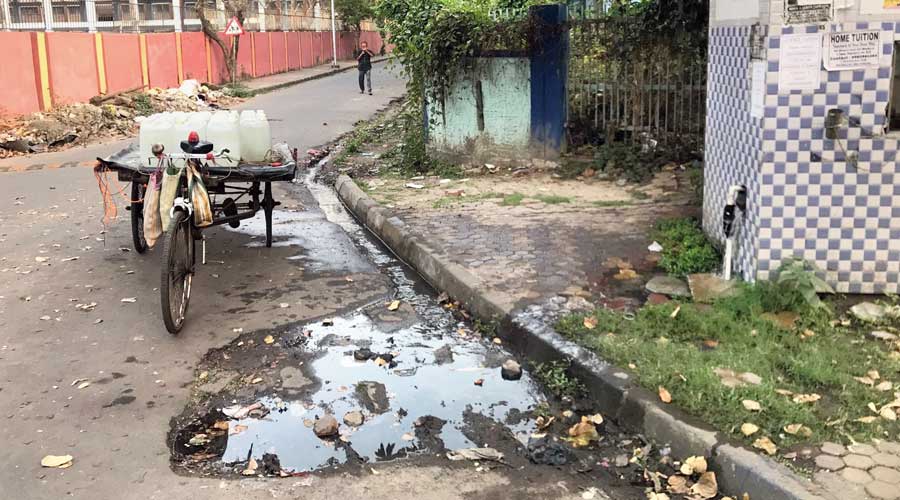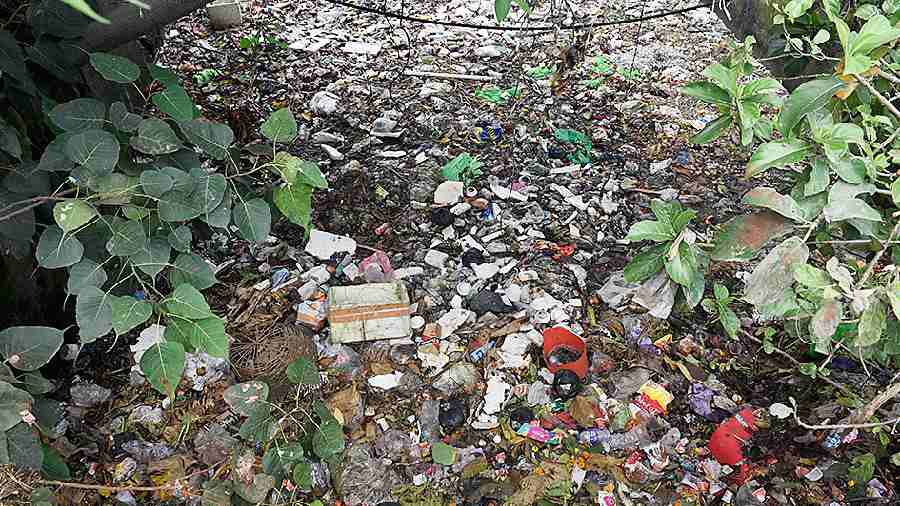Many Kolkatans across the city have complained that they have not come across any vector-control workers in their neighbourhoods in recent weeks.
Those who did spot civic teams spray larvicide in their localities said the gap between two visits was too long to have any impact on the mosquito population, and the spread of dengue.
Vector-control workers are supposed to revisit a place every seven days, said an official of the Kolkata Municipal Corporation (KMC).
Some KMC officials admitted that often the gap between two visits stretched to 20 days.
Dengue, caused by a virus that is spread by the Aedes aegypti mosquito, has claimed two lives in Kolkata so far this year.
The city recorded as many as 578 dengue cases this year till August 28, a KMC official said.
The civic body has not released any data on daily new infections since August 28.
Sloppy vector-control work: A resident of Prannath Chowdhury Lane in north Kolkata’s Cossipore said vector-control workers visited their neighbourhood for the first time in 45 days on Friday.
“My wife had to be admitted to hospital after she contracted dengue. Now my son is in hospital. Many others in the locality are running a temperature. But vector-control work doesn’t take place at regular intervals,” he said.
A resident of Kasba’s Haltu in south Kolkata said she had not seen any vector-control worker visit the place in two or three months.
A resident of Sovabazar’s Joy Mitra Street said vector-control teams visit their locality once in 15 or 20 days. A resident of Ekdalia Place said a vector-control team of the KMC visited there neighbourhood last week, after at least two months.
KMC’s admission: KMC officials who oversee vector-control work admitted that the gap between two visits was often too big to have any significant impact on the mosquito population.
“The gap at times is as long as 20 days,” said an official.
A comparatively larger ward has about 25 vector-control workers assigned to it.
A smaller one has around 20 such people.
“The workers’ job is to locate mosquito breeding sites and spray larvicide,” the official said.
“Each team is supposed to visit between 50 and 75 households a day, at least. But we find that often it is not possible to revisit a place within seven days,” the official said.
“It takes a week since eggs are laid for adult mosquitoes to emerge. So it is important to drain out stagnant water or spray larvicide on breeding sites at least once a week.”
Locked properties: There are scores of locked properties across the city that have turned into mosquito breeding sites.
Discarded cups and containers where water accumulates can become ideal places for Aedes aegypti mosquitoes to breed.
A resident of Temple Street in Chandni Chowk said they had knocked on several doors to ensure that a property that has been lying locked for over a decade is cleaned.
“We had approached the previous councillor. We wrote to the KMC. No one has cared to clean it. We are all in danger of contracting dengue,” said the resident. Councillor Bimal Singh said he would try to get the property cleaned.


